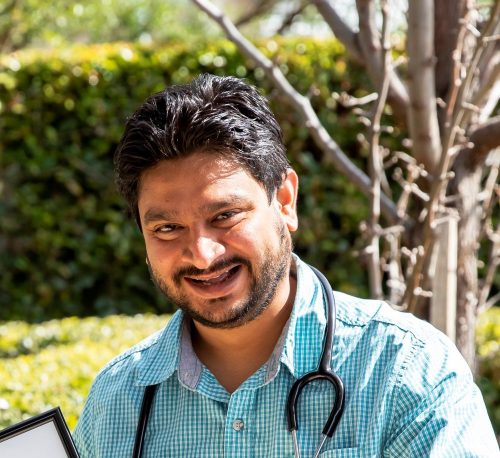"Nurse practitioners in aged care are the future"
"Nurse practitioners in aged care are the future"
by David McKeown
Wednesday, November 11, 2020
When Keyur Anand studied to be a nurse practitioner, his peers believed he would achieve ‘something special’. His initial choice would have probably been to work in a hospital setting, but circumstances brought him to aged care instead. While he noticed how differently aged care nurse practitioners were perceived in the profession, his passion for caring for others never wavered.
“When I tell other nurse practitioners that I work in aged care, they would say ‘Oh aged care, you guys don’t do anything!’, and I thought ‘Really? You think that?’ There is this perception in society about aged care nurses, where people think of us as having less knowledge or skills than other nurses. That really hurt me initially. Aged care nurses are not just going around and giving pills! We are looking after residents’ social lives and their mental health. You have to look at the person as a whole,” says Keyur about his profession.
Palliative Care Training
Very quickly, Keyur noticed that palliative care training for aged care and healthcare staff, even in university settings, was not as frequent as it should be. When working with patients near the end of their life, he aims to involve other aged care staff to teach them what they should be looking for when evaluating a resident’s condition. Proceeding this way allows him to upskill other professionals while assessing the patient’s needs. He then develops personalised plans, prioritising non-pharmacological avenues of intervention.
“More and more training and regular upskilling are the keys to improve palliative care in aged care. We need to do mandatory yearly training manual handling and infection control, so why not mandatory palliative care training?”
Supporting Culturally and Linguistically Diverse communities
Another aspect of Keyur’s work is to support families from diverse cultural backgrounds. While he says the ‘medical side’ of palliative care will remain mostly the same, he believes the emotional and grief aspect should be culturally appropriate, even if there are sometimes only small differences between communities. Cultural sensitivity is an integral part of the training he provides.
“Every culture sees death in different ways. For example, I am from an Indian background, where we hold different views on palliative care, and we want to do everything we can to save our parents because they did everything they could for us when we were young. It’s vital to connect end-of-life care with the culture because they may have different requirements,” Keyur says.
A Virtual Reality project
Keyur has now decided to bring palliative care education to the next level, using a tool that’s more and more frequently discussed in healthcare settings: virtual reality. His thinking is that virtual reality is an ideal vector to help staff deal with residents having palliative care needs and hold end-of-life conversations with families.
“Staff will come into aged care without much training on how to bring difficult news to families. Our project is to create different training scenarios where family members would react differently based on the news and how to intervene in these situations. We also want to use this training tool to help familiarise staff with the treatment of non-verbal patients receiving end-of-life care and who become agitated or uncomfortable. These are the outlines of the project that we are currently developing, although there is still a long process ahead,” Keyur says.
Discussing with families
Managing end-of-life conversations is not the only challenge; perceptions of care also need to be managed with loved ones. Keyur notes that some families believe that the only place of care for their loved one should be the hospital. This can be problematic because hospital transfers may cause the patient a lot of distress, and they might die in an unfamiliar environment, or even on the way to the hospital.
“In hospitals, doctors and nurses are busy and may not be able to explain families in detail the course of action that should be taken with their relative and what the future goals of care should be. This can lead to some resistance from the family members to accept that the only treatment option should be symptom management. Why can’t we do something that will help not only the nursing staff but also the family members to overcome the hurdle of understanding palliative care, and how to explain things more effectively to the family members,” asks Keyur.
Nurse practitioners are essential in aged care
Keyur mentions that Australia doesn’t have aged care specific guidelines to assess residents and send them to the hospital if required, which can lead to many unnecessary hospital admissions, or even to ambulance ramping, which is when ambulances are parked outside hospitals while the crew waits with patients for admission. He believes that if there more nurse practitioners in aged care, it will be easier to avoid unnecessary hospitalisations from nursing homes.
“Nurse practitioners in aged care are the future; it’s the way to go. Governments have to understand that if you have somebody on site who’s medically trained and can help avoid unnecessary hospital admissions, it can take away pressure from the whole system. Hiring nurse practitioners also benefits the aged care residents, who can get better symptom management in a timely manner and avoid complications,” he says.
Keyur concludes by reminding us why we all need to keep working to improve how we care for older Australians. “These people worked hard their whole life; they deserve the best care. Having more nurse practitioners in aged care will help deliver that.”
